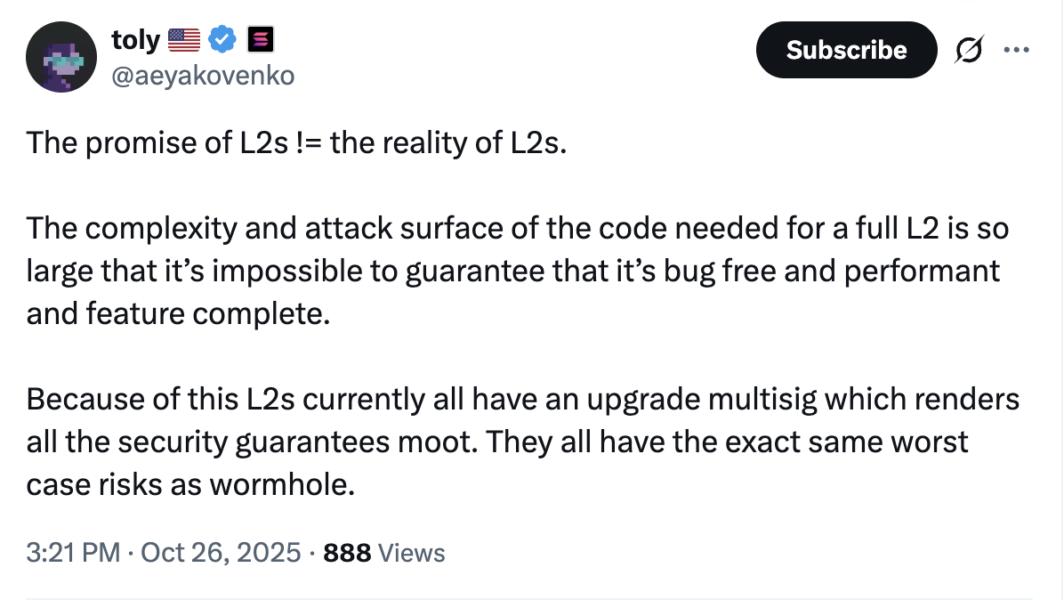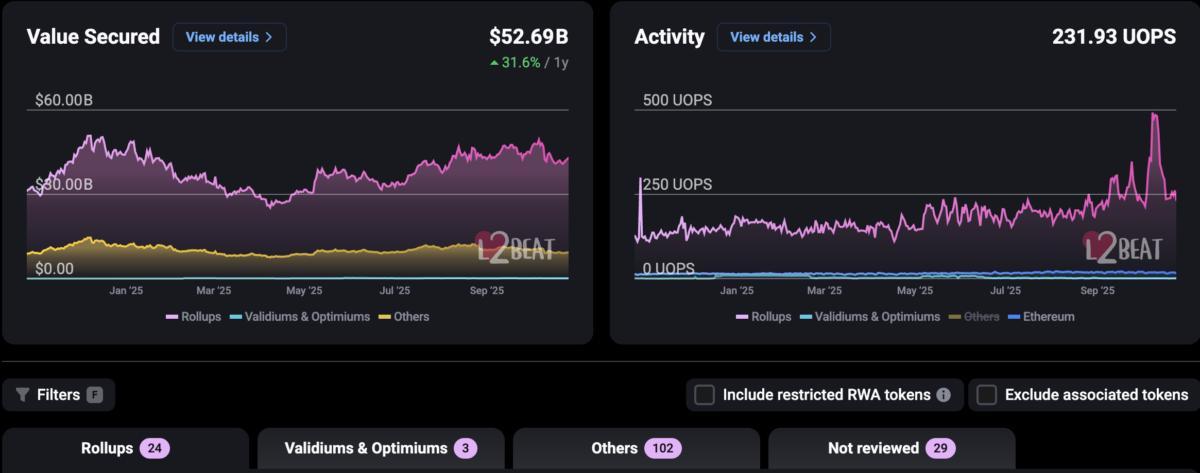‘The claim that L2s inherit ETH security is erroneous’ — Solana co-founder
Solana co-founder Anatoly Yakovenko cast doubt on the decentralization and security of Ethereum’s layer-2 (L2) scaling networks during a heated debate on Sunday.
Layer-2 scaling networks feature a huge attack surface and code bases so large that they cannot be properly audited for software bugs. User funds can also be shifted from L2s, which rely on multisignature custody, without the users’ consent, Yakovenko added.
‘The claim that layer-2s inherit ETH security is erroneous,’ Yakovenko said during the debate. He argued:

The conversation surrounding Ethereum’s layer-2 scaling networks continues, as developers, investors, and industry executives debate whether the layer-2 networks benefit the Ethereum layer-1 blockchain or hurt it.
Are there too many Ethereum layer-2 networks?
There are 129 verified Ethereum layer-2 networks at the time of this writing, according to L2Beat, and 29 scaling networks that have not yet been reviewed by the site.
The blockchain industry has about 10 times more L2s than is needed, according to
Adrian Brink, co-founder of Anoma, a layer-1 blockchain protocol.
There can never be too many L2s, Igor Mandrigin, co-founder of Web3 and blockchain infrastructure provider Gateway.fm, argued.
The explosion of L2 networks is a healthy sign for Ethereum that signals network growth and increased diversity in the ecosystem, Mandrigin said.
Anurag Arjun, co-founder of Avail, a unified chain abstraction solution and the Polygon layer-2 network, concurs and told Cointelegraph that each Ethereum L2 represents a high-throughput blockchain, giving Ethereum a multitude of high-throughput options.
However, the proliferation of these layer-2 networks is cannibalizing revenue on the Ethereum base layer, according to Binance Research.
These networks are fragmenting liquidity and eating into the revenue on the base layer due to their low transaction fees compared to transacting on the layer-1 blockchain, the researchers wrote.